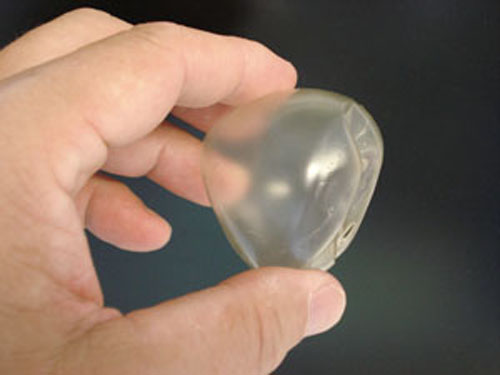
Breeding Containment, 2007
A three-dimensional biological container for breeding
The project studies the possibilities of pneu shaping and bubbles made of biological polymers, which are used as research tools for breeding plant cells and tissue.
Biological lab experiments commonly use flat plastic vessels called Petri dishes. These are filled with a layer of agar on which microbes are bred and observed.
The idea of Breeding Spaces is to create a three-dimensional biological membrane the whole interior of which is a bioreactor that enables controlled experiments in laboratory conditions. In order to achieve this, the whole research container is made of a biopolymer.
The Spatium Gelatum technology is used to make transparent spatial membranes of agar, agarose or phytogel, which constitute three-dimensional biological Petri dishes.
These are usually sphere-shaped membranes that consist of 98% water and are filled with air. In the gelation process, the agar forms stable albeit soft and flexible walls which tightly isolate the interior from the environment.
The polymer layer provides both a spatial perimeter and a nutrient medium for the microorganisms, as well as stimulating the processes that take place inside the membrane. The breeding process involves injecting plant cells into the interior of the form. This creates a closed system, a type of an introverted biosphere.
Breeding Spaces are concurrently spaces for breeding and breeding farms for space.
The project is an attempt to produce a system in which the borderline that separates the interior from the environment is not a foreign body made of neutral material (like Petri dishes, bottles or other glass containers), but an immanent part of the whole structure. It is concurrently a boundary and a spatial scaffold. It plays an active role and stimulates the processes that happen in the system. These properties are specific for biological membranes in live organisms, for example in live cells.
Biodegradable materials are also to be used as a construction material. As the cells multiply on the walls and create stable tissue, the bubbles will self-degrade and enable the growth of autonomous plant objects.
There are plans to use the universal pneu principle on different scales: on the scale of a cell, a pill, a fruit, a home and the biosphere.

material science
spatium gelatum
form as process
isopycnic system
breeding spaces
new soil
transgenic habitat
beyond gravity